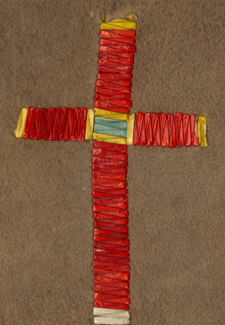
Vanished Worlds, Enduring People
The Written Word
At least two native groups in the Americas developed systems for record-keeping before the Europeans came. The Mayas in Central America had a true system of writing. Those familiar with the language and versed in their hieroglyphs can read the inscriptions on their monuments. The Incas in the Andes of South America kept records by a system of knots in strings called quipus. Though they are not completely understood, scholars believe they were used for both accounting and as mnemonic devices, or aids to memory. The Plains Indians in North America used pictures to illustrate significant events of a particular time period. Surviving “winter counts,” pictures painted on hide, depict such occurrences as epidemics, battles, and droughts. Other North American groups painted and carved images to remind them of events or numbers. Most records of their histories were oral, stories repeated again and again from generation to generation so they would not be forgotten.
Faced with the need to communicate, missionaries addressed the challenge of transcribing Indian languages to written form soon after they began to Christianize Native Americans. These early attempts were largely for the benefit of Europeans, but the emphasis soon turned to the reproduction of religious texts in local languages. Missionaries struggled with standardizing transcriptions of unfamiliar sounds. While usually employing the standard Latin alphabet, they also came up with a variety of other creative solutions to write Indian languages. Many native Americans soon learned to read and write.
Written Indian languages made the transition from religious to secular with varying degrees of success. In the United States today, using language immersion and bilingual education programs, tribes struggle with the challenge of sustaining native languages in both oral and written forms.